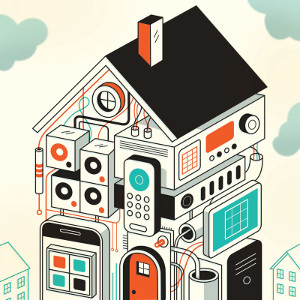LENS Engineering, Science and Technology
Good Vibrations
How Your Coffeemaker Could Help Turn Off the Lights
 IMAGE: THEISPOT.COM / HARRY CAMPBELL
IMAGE: THEISPOT.COM / HARRY CAMPBELLUniversity researchers are designing sensors for smart buildings powered by the vibrations of everyday objects and appliances.
Philip Feng, PhD, wants to make your house smarter.
Today's smart homes and commercial buildings can save energy by using electronic sensors to turn off lights or turn down heating and cooling systems in empty rooms.
But Feng, an associate professor of electrical engineering and computer science at Case Western Reserve, and his university colleagues want to make the sensors smarter, more energy efficient, and easier to install and maintain than today's off-the-shelf models.
They're designing sensors powered not by batteries or traditional electrical sources, but by the vibrations of everyday objects and appliances within a building—such as gurgling coffeemakers, humming refrigerators or even wind rushing through a window. (A prototype sensor attached to the door of Feng's lab even causes an LED to glow blue whenever the door closes.)

Philip Feng, associate professor
The team also is developing a system to wirelessly transmit data to an electronic hub that could in turn send data to a laptop or smartphone. Still to come: creating software to either trigger automatic changes to the environment or allow a person to do it. Feng is working with Cleveland-area startup Intwine Connect to develop such a hub, while Kenneth Loparo, PhD, Nord Professor of Engineering and chair of the Department of Electrical Engineering and Computer Science, is helping with data analytics.
The goal is to enable anyone to easily install a sensor network in a home or office, instantly raising its IQ.





